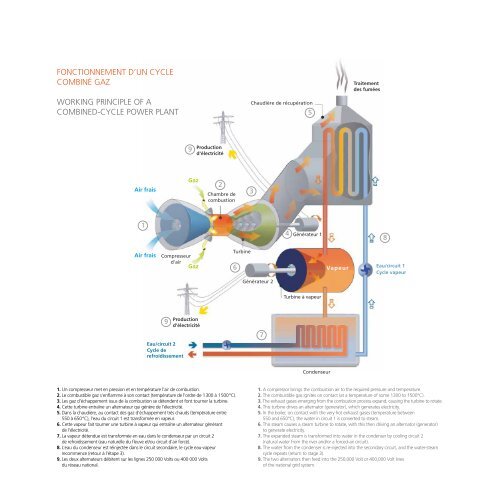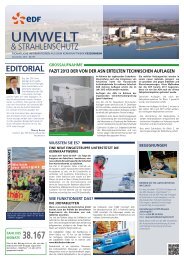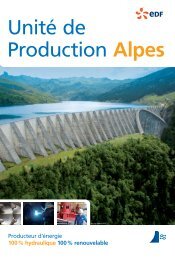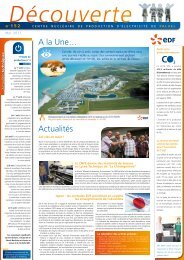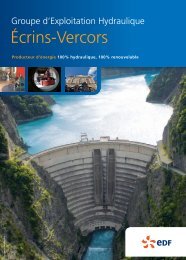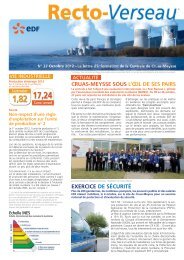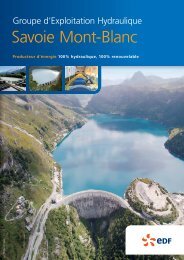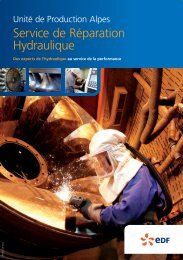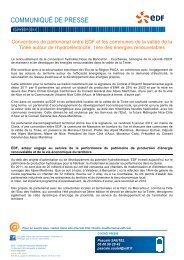ARCHITECTES d'énergie - Energie EDF
ARCHITECTES d'énergie - Energie EDF
ARCHITECTES d'énergie - Energie EDF
Create successful ePaper yourself
Turn your PDF publications into a flip-book with our unique Google optimized e-Paper software.
FonctionneMent d’un cycLe<br />
coMBiné gaz<br />
Working principLe oF a<br />
coMBined-cycLe poWer pLant<br />
1. un compresseur met en pression et en température l’air de combustion.<br />
2. Le combustible gaz s’enflamme à son contact (température de l’ordre de 1 300 à 1 500 °c).<br />
3. Les gaz d’échappement issus de la combustion se détendent et font tourner la turbine.<br />
4. cette turbine entraîne un alternateur qui génère de l’électricité.<br />
5. dans la chaudière, au contact des gaz d’échappement très chauds (température entre<br />
550 à 650 °c), l’eau du circuit 1 est transformée en vapeur.<br />
6. cette vapeur fait tourner une turbine à vapeur qui entraîne un alternateur générant<br />
de l’électricité.<br />
7. La vapeur détendue est transformée en eau dans le condenseur par un circuit 2<br />
de refroidissement (eau naturelle du fleuve et/ou circuit d’air forcé).<br />
8. L’eau du condenseur est réinjectée dans le circuit secondaire, le cycle eau-vapeur<br />
recommence (retour à l’étape 3).<br />
9. Les deux alternateurs débitent sur les lignes 250 000 volts ou 400 000 volts<br />
du réseau national.<br />
1. a compressor brings the combustion air to the required pressure and temperature.<br />
2. the combustible gas ignites on contact (at a temperature of some 1300 to 1500°c).<br />
3. the exhaust gases emerging from the combustion process expand, causing the turbine to rotate.<br />
4. this turbine drives an alternator (generator), which generates electricity.<br />
5. in the boiler, on contact with the very hot exhaust gases (temperature between<br />
550 and 650°c), the water in circuit 1 is converted to steam.<br />
6. this steam causes a steam turbine to rotate, with this then driving an alternator (generator)<br />
to generate electricity.<br />
7. the expanded steam is transformed into water in the condenser by cooling circuit 2<br />
(natural water from the river and/or a forced-air circuit).<br />
8. the water from the condenser is re-injected into the secondary circuit, and the water-steam<br />
cycle repeats (return to stage 3).<br />
9. the two alternators then feed into the 250,000 volt or 400,000 volt lines<br />
of the national grid system.


